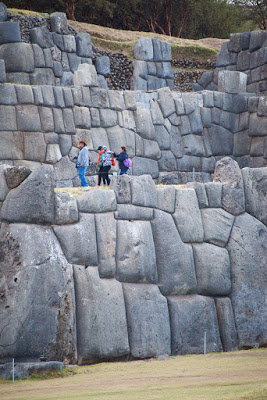During the Spanish Conquest of the Inca Empire’s capital city of Cuzco, Conquistador Francisco Pizarro’s brother Pedro found outside the city what has been described as a fortress in an area known as Sacsayhuamán. Pedro described the stones which formed the lower part of the fortress walls as “so large and thick that it seemed impossible that human hands could have set them in place…they were so close together, and so well fitted, that the point of a pin could not have been inserted in one of the joints.”

Modern estimates of the weight of the largest of these stones is between 125 and 200 tons. By way of comparison, the largest stone at Stonehenge in Great Britain weighs about 30 tons. The largest stone in the Great Pyramid of Cheops in Egypt is up to 80 tons. The weight of the largest of the stones used by the Latter-day Saints to build the Salt Lake Temple in the mid-1800’s was about 2.8 tons.
Not only were these massive stones precisely and carefully fitted together without mortar, but the stones were highly irregular, such that the joints between the stones did not form regular horizontal or vertical lines. This irregularity, along with the walls slight backward pitch, greatly strengthened the stability of the walls to withstand the frequent earthquakes in the region.
After the Spanish capture of Cuzco much of the Inca’s impressive work was dismantled by the Spanish to use the stones in their own buildings. Only those stones that were too large to be easily moved remained.
Even though the Incan constructed these walls only a few 100 years before the Spanish Conquest, the building technique for these impressive structures was lost with the destruction of the Incan Empire, much like the technique for building with concrete in Europe was lost for centuries after the fall of the Roman Empire.
The conquest and subjugation of peoples not only destroys their way of life and causes loss of life, but it often causes the loss to the human family of peculiar knowledge developed over generations. The remnants of the walls of Sacsayhuamán stand testament to the Incan’s understanding of the world in which they lived and the advanced engineering techniques they developed to survive and prosper in their environment. That knowledge was lost in the wholesale plundering by the Spanish, not yet to be retrieved.
The accumulation of human knowledge is not linear. The process can be reversed.